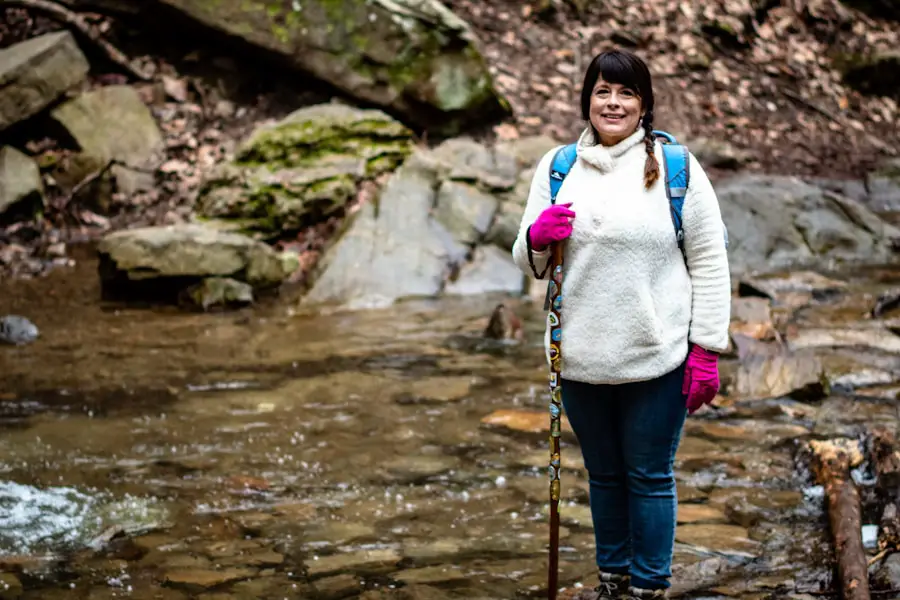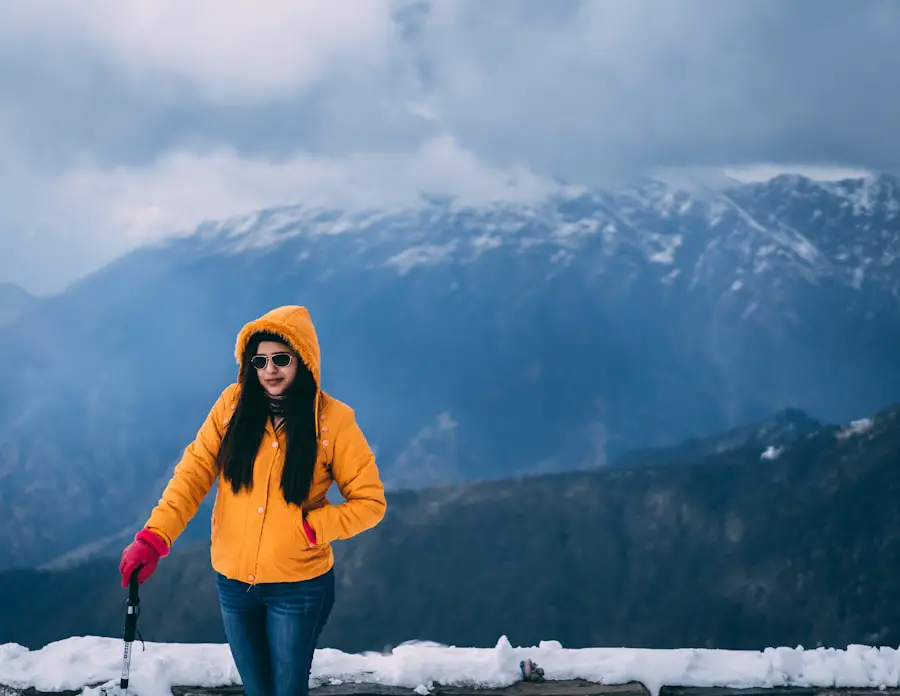Layering is a fundamental principle in outdoor clothing that significantly enhances comfort and performance in varying weather conditions. The concept revolves around wearing multiple layers of clothing, each serving a specific purpose, which allows for better temperature regulation, moisture management, and protection against the elements. By utilizing a layering system, individuals can adapt to changing conditions throughout the day, whether they are hiking, skiing, or engaging in any outdoor activity.
This adaptability is crucial, as it enables outdoor enthusiasts to maintain an optimal body temperature, preventing overheating during exertion or chilling when resting. The effectiveness of layering lies in its ability to trap heat while allowing moisture to escape. The base layer wicks sweat away from the skin, the insulating layer retains warmth, and the outer shell protects against wind and precipitation.
This triad of layers works synergistically to create a microclimate around the body, ensuring that the wearer remains dry and warm.
Moreover, layering allows for easy adjustments; if temperatures rise or physical activity increases, one can simply remove a layer to cool down. Conversely, if conditions worsen, adding an extra layer can provide additional warmth and protection.This flexibility is particularly valuable in unpredictable weather scenarios often encountered in mountainous or wilderness areas.
Key Takeaways
- Layering is important for staying comfortable and safe in outdoor activities, as it allows for easy temperature regulation and moisture management.
- Base layer options include synthetic materials like polyester or natural fibers like merino wool, which both wick moisture away from the skin and provide insulation.
- Insulating layer choices range from fleece and down to synthetic insulated jackets, providing warmth without adding too much bulk.
- When selecting an outer shell, consider factors like waterproofness, breathability, and durability to protect against the elements.
- Footwear considerations should include the activity, terrain, and weather conditions, with options like hiking boots, trail runners, or insulated winter boots.
- Headwear and accessories like hats, gloves, and neck gaiters are essential for protecting against heat loss and sun exposure.
- Backpack and gear essentials include a properly fitting pack, navigation tools, first aid kit, and emergency supplies for a safe and enjoyable outdoor experience.
- Tips for staying comfortable and safe include staying hydrated, taking regular breaks, and being prepared for changing weather conditions.
Base Layer Options
The base layer is the first line of defense against the elements and plays a critical role in moisture management. It is designed to sit directly against the skin, making it essential for regulating body temperature and keeping sweat at bay. When selecting a base layer, materials such as merino wool, synthetic fibers like polyester or nylon, and blends of these materials are popular choices.
Merino wool is favored for its natural moisture-wicking properties and ability to regulate temperature while remaining odor-resistant. It provides warmth even when wet, making it an excellent option for cold-weather activities. Synthetic base layers, on the other hand, are often lighter and dry more quickly than their wool counterparts.
They are engineered to wick moisture away from the skin efficiently, which is particularly beneficial during high-intensity activities where sweat production is significant. Brands like Patagonia and Under Armour offer a range of synthetic options that cater to various climates and activity levels. When choosing a base layer, it’s important to consider fit as well; a snug fit ensures optimal moisture transfer while allowing for freedom of movement.
Additionally, features such as flatlock seams can enhance comfort by reducing chafing during prolonged wear.
Insulating Layer Choices
The insulating layer serves as the primary source of warmth in the layering system. Its main function is to trap body heat while still allowing moisture to escape from the base layer. Various materials are used for insulation, each with its own set of advantages and disadvantages.
Down insulation is renowned for its exceptional warmth-to-weight ratio and compressibility, making it a favorite among backpackers and climbers who need to minimize pack weight. However, down loses its insulating properties when wet, so it’s crucial to pair it with a water-resistant outer layer or opt for hydrophobic down that retains loft even when damp. Synthetic insulation materials like Primaloft or Thinsulate have gained popularity due to their ability to retain warmth even when wet.
These materials are often less expensive than down and provide excellent thermal efficiency while being easier to care for. They also tend to dry faster than down, making them suitable for wet conditions. When selecting an insulating layer, consider factors such as weight, packability, and intended use.
For instance, a lightweight fleece jacket may be ideal for high-energy activities in cool weather, while a heavier insulated parka might be necessary for extended stays in frigid environments.
Outer Shell Selection
| Outer Shell Selection | Metrics |
|---|---|
| Total Outer Shells | 350 |
| Top Selling Outer Shell | Black Waterproof Jacket |
| Outer Shell Returns | 25 |
| Outer Shell Sales Growth | 15% |
The outer shell is the final barrier against wind, rain, and snow, making it an essential component of any layering system. When choosing an outer shell, it’s important to consider both waterproofness and breathability. Materials such as Gore-Tex and eVent are popular choices for their ability to keep water out while allowing moisture vapor from sweat to escape.
This balance is crucial for maintaining comfort during physical activities where perspiration levels can fluctuate dramatically. In addition to waterproofing and breathability, the design of the outer shell should also be taken into account. Features such as adjustable hoods, cuffs, and hemlines can enhance fit and functionality, providing additional protection against the elements.
Ventilation options like pit zips or mesh-lined pockets can help regulate temperature during intense activities by allowing excess heat to escape without compromising waterproofing. Furthermore, consider the weight and packability of the shell; lightweight options are ideal for fast-paced activities like trail running or climbing, while heavier shells may be more suitable for extended expeditions in harsh conditions.
Footwear Considerations
Footwear is a critical aspect of any outdoor adventure, as it directly impacts comfort and safety on varied terrain. The right pair of shoes or boots can make all the difference in preventing blisters and ensuring stability on uneven surfaces. When selecting footwear, consider the type of activity you will be engaging in; hiking boots differ significantly from trail running shoes or mountaineering boots in terms of support, traction, and waterproofing.
For hiking or backpacking, look for boots that offer ankle support and a rugged outsole designed for traction on slippery or rocky surfaces. Brands like Salomon and Merrell provide a range of options that cater to different foot shapes and preferences. Waterproof membranes such as Gore-Tex can keep feet dry in wet conditions but may sacrifice breathability; therefore, it’s essential to balance these features based on your specific needs.
For lighter activities like trail running or day hikes, breathable trail shoes with good grip may suffice. Always ensure that footwear fits well with enough room in the toe box to prevent discomfort during long treks.
Headwear and Accessories

Headwear and accessories play a vital role in maintaining overall comfort during outdoor activities by protecting against sun exposure, cold temperatures, and precipitation. A good hat can shield your face from harmful UV rays while providing ventilation on hot days. Wide-brimmed hats are particularly effective for sun protection during summer hikes or beach outings.
In colder climates, beanies or balaclavas made from wool or synthetic materials can provide essential warmth by covering the head and neck. Additionally, accessories such as gloves or mittens are crucial for keeping hands warm and functional in cold weather. Insulated gloves with touchscreen compatibility allow for easy use of devices without sacrificing warmth.
Neck gaiters or buffs can also be versatile additions; they can be worn around the neck for warmth or pulled up over the face during windy conditions. When selecting headwear and accessories, consider factors such as material performance (moisture-wicking vs. insulating), fit, and versatility to ensure they meet your specific outdoor needs.
Backpack and Gear Essentials
A well-equipped backpack is essential for carrying all necessary gear during outdoor excursions. The choice of backpack depends on the duration of your trip and the amount of gear you need to carry. Daypacks are ideal for short hikes or outings where minimal gear is required, while larger backpacks with capacities ranging from 50 to 70 liters are better suited for multi-day trips where additional supplies such as food, water, and sleeping gear must be accommodated.
When selecting a backpack, look for features that enhance comfort and functionality. Adjustable straps and padded hip belts can help distribute weight evenly across your body, reducing fatigue during long treks. Additionally, consider compartments that allow for organized storage of gear; external pockets can provide easy access to items like water bottles or snacks without having to dig through the main compartment.
Hydration reservoirs integrated into backpacks can also be beneficial for staying hydrated on the go.
Tips for Staying Comfortable and Safe
Staying comfortable and safe during outdoor activities requires careful planning and awareness of your surroundings. One key tip is to always check weather forecasts before heading out; being prepared for sudden changes in weather can prevent dangerous situations from arising. Additionally, understanding your limits is crucial; know when to turn back if conditions become too challenging or if you feel fatigued.
Another important aspect is maintaining proper nutrition and hydration throughout your adventure. Carrying high-energy snacks like nuts or energy bars can help sustain energy levels during long hikes or climbs. Regularly drinking water is essential; dehydration can lead to decreased performance and increased risk of injury.
Lastly, familiarize yourself with basic first aid practices; carrying a well-stocked first aid kit can be invaluable in case of minor injuries or emergencies while enjoying the great outdoors. By understanding the importance of layering and selecting appropriate gear tailored to specific activities and conditions, outdoor enthusiasts can enhance their experience while ensuring safety and comfort throughout their adventures.
If you’re planning a hiking trip in 50-degree weather, you’ll want to make sure you’re dressed appropriately for the conditions.
One helpful article to check out is this guide on the best carry-on luggage for international travel. It may not be directly related to hiking attire, but having the right luggage can make your travel experience much smoother and more enjoyable.FAQs
What should I wear for hiking in 50-degree weather?
In 50-degree weather, it’s important to dress in layers. Start with a moisture-wicking base layer, add a insulating layer, and finish with a waterproof and windproof outer layer.
What are some examples of moisture-wicking base layers?
Moisture-wicking base layers can include synthetic materials like polyester or merino wool. These materials help to keep sweat away from your skin, keeping you dry and comfortable during your hike.
What type of insulating layer is suitable for 50-degree weather?
For 50-degree weather, a lightweight fleece or down jacket can provide the right amount of insulation without causing you to overheat during your hike.
What should I look for in a waterproof and windproof outer layer?
Look for a waterproof and windproof jacket that is breathable to prevent overheating. It should also have adjustable features like a hood, cuffs, and hem to help seal out the elements.
What type of pants are suitable for hiking in 50-degree weather?
For 50-degree weather, consider wearing lightweight and breathable hiking pants. Look for options that are water-resistant and offer some insulation without being too bulky.
What type of footwear is recommended for hiking in 50-degree weather?
Choose hiking boots or shoes that provide good traction and ankle support. Look for options that are waterproof and breathable to keep your feet dry and comfortable during your hike.

